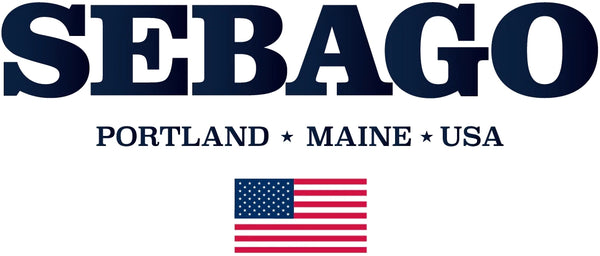About
New England is a place where water is a car drive away, and its inhabitants are always seeking it out, constantly drawn to its lakes and shores for recreation, water sports, and breathtaking sunsets. So, it isn’t a stretch to think our founding fathers looked to a lake for the company’s name. That lake was Sebago Lake, a large and majestic expanse of water nestled in Southern Maine. Sebago means ‘big stretch of water’ and was named that by a local tribe of Abenaki Indians, the Sebago Moc Company.
From the outset, our philosophy was straightforward: craft shoes for people, reflecting who they are and how they live. The importance and reverence of craft has always been with us and has been the guiding star that led us to create some of the world’s most iconic, handsewn footwear styles.
Although born in Maine, Sebago has become an international brand: your shoes are produced by companies located in the Dominican Republic, Mexico and El Salvador, as well as by a few small specialist manufacturers in Southeast Asia. Sebago shoes have always been and will only ever be crafted by the hands of expert shoemakers, meticulously selected based on stringent standards in order to ensure the highest quality results.
1946 – SEBAGO ESTABLISHED
Sebago was born from a consumer demand for quality, casual footwear. Driven to ensure his five independent shoe stores in Maine remained well-stocked, one determined owner embodied the spirit of New England ingenuity. He partnered with two local businessmen to establish a handsewn footwear factory. The very first shoe they crafted, the Sebago Classic Beefroll Penny Loafer, continues to be made with the same meticulous handsewn techniques and finest craftsmanship it was known for from the start.
1964 – LOVED AROUND THE WORLD
Once established in the USA, our sights were set abroad and we began selling in some parts of Europe. However, we saw a substantial gain when in 1964 Sr. Francisco Gaudier purchased a pair of Classic penny loafers in Switzerland. He was so impressed with the quality that he visited the Sebago factory in Maine. A partnership was struck, and his company began selling Sebago across Europe. The level of craftsmanship and materials won the hearts of many Europeans. Years later, the introduction of the Docksides and its colourful counterpart, the Spinnaker, were the ‘must-have’ casual shoe for vacationers in the South of France. We are now in 120 countries around the globe.
1970s – DOCKSIDES LAUNCH
With avid sailors running Sebago in the late 60s, they looked to create a functional, handsewn leather boat shoe. The Docksides was launched in 1970 to meet that need and has grown to historic status. It is still being handsewn and finished the same way, but new materials and colours have evolved the Docksides to casual shoe status. A practical alternative to the canvas boat shoe of the time, Docksides brought dramatic growth to the company.
1990s – SAILING IS OUR HERITAGE
From our roots near Sebago Lake in Maine, and the launch of the Docksides, sailing has always been in our blood. Through the years, Sebago has sponsored the Celebrity Regatta, Newport to Bermuda, and The America’s Cup, as well as the prestigious title of the official supplier of yachting footwear to the U.S. sailing team. Sailing is part of our heritage and DNA… we feel at home on the deck of a boat.
1993 – A CRAFTED LEGACY
The tagline “Crafted with Care, Crafted to Last” was introduced. Many of Sebago’s 800 workforce were sons and daughters of former employees carrying on the crafted legacy.
2016 – A PLATINUM ANNIVERSARY
In 2016, Sebago celebrated its platinum anniversary and 70 years of dedicated skill and a Life Well Crafted.
2017 – BASICNETS.P.A
Turin, July 31st, 2017. Today BasicNet S.p.A. has signed the agreement for the acquisition of the Sebago® brand from the American company Wolverine World Wide, Inc. Sebago® is an ideal brand for BasicNet: classic, iconic, sporty and renowned worldwide” says Marco Boglione, Founder and Chairman of the BasicNet Group. “This is a wonderful opportunity for the BasicNet’s network of distribution licensees and sourcing centers.”

